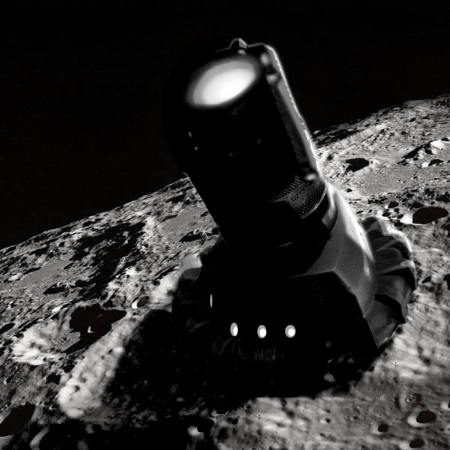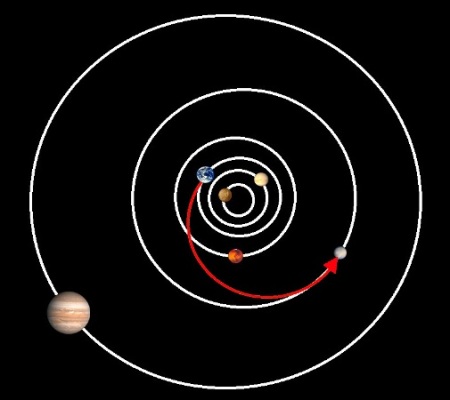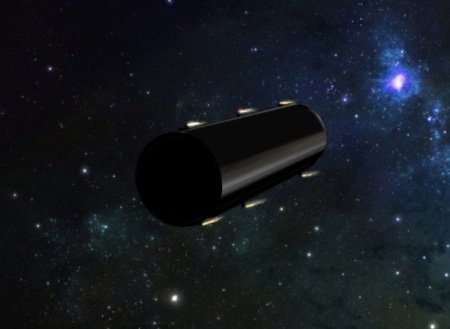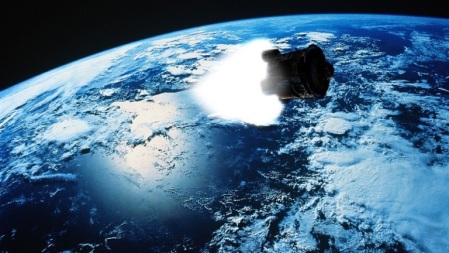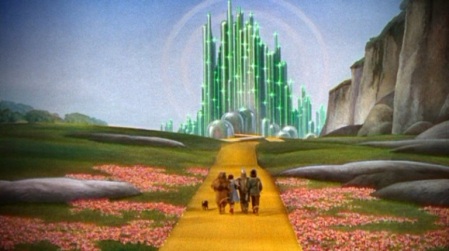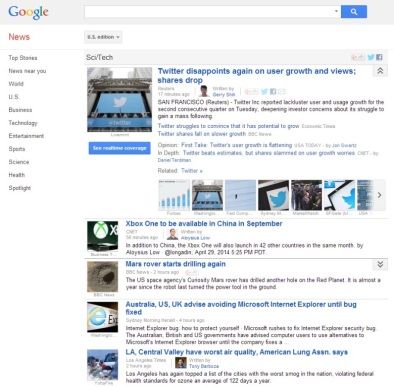I have previously discussed what life and government might be like in the near future. In all of these discussions I have more or less presumed that people will colonize space. What I would like to demonstrate in this article is why space colonization is both desirable and inevitable.
To me, the opportunity to live in space, even in less than ideal conditions, would be its own reward. I grew up shortly after the golden age of science fiction and during the Gemini and Apollo launches, so the attraction of space travel has been ingrained in my psyche. The first movie I fell in love with was the Ray Harryhausen extravaganza First Men in the Moon. However, I have recently been apprised of a mindset that I find somewhat perplexing: that of people who find space travel to be uninteresting and a complete waste of time. Perhaps that has come about as a result of the near saturation of space travel fantasies in modern science fiction shows such as Star Trek and Stargate. What I hope to demonstrate here is that space travel will soon be so inexpensive and automatic that the decision to become a space man will amount to little more than the decision to go to the store for milk or visit your best friend on Saturday.
There are numerous advantages to living in space. For example, the lack of gravity would facilitate virtual reality (VR) experiences. It would make it far easier to simulate the physical sensation of living in a variety of environments. The one thing that will be nearly impossible to simulate in VR will be the sensation of freefall. There just is not any easy way to do it at the bottom of a gravity well like we experience on the surface of the earth. In actual freefall it would be easy. Alternately, it would be easy to use acceleration to regain the sensation of being in a gravity well. A freefall environment would also make it much easier to manufacture certain kinds of objects. For example, it would be easy to manufacture a perfect metal sphere that could be used as a bearing. It would also be easier to perform certain kinds of surgeries or recover from certain kinds of surgeries. You would not get bedsores in freefall. It is frequently observed that the presence of cosmic rays make living in space uncomfortable, unnatural, and unhealthy. However studies have shown that with adequate shielding this problem can be overcome. Since the best kind of space habitat would probably be a spinning O’Neil cylinder, the shielding could also provide structural integrity and a defense against small asteroid collisions.
The best thing about living in space is that there is so much “space”. The earth will always have a limited surface area. Except for building upward, people will inevitably experience a certain amount of crowding. Space stations could be so fabulously spacious that everyone could literally have their own country estate.
An O’Neil cylinder is basically just a big cylindrical shell that spins. It could be as large as the builders care to make it. All of the large stresses on this kind of space station come from centripetal force. The air pressure of oxygen at 100 kPa is not a serious challenge. Hence, size is not an obstacle. These cylinders could have a separate cylindrical surface inside the exterior surface that creates the illusion of a sky. Using large arrays of LED lights, it will be possible to create the illusion of a completely believable sky over everyone’s head. People living under such a simulated sky would look out on their environment and swear they are living in an idyllic terrestrial setting:
If the advantages of living in space are not sufficient motivation to move there, the ease with which it will be accomplished should allay any remaining objections.
Very soon, it will be possible to build fully autonomous robots that can perform all of the tasks of a normal person. The advantage these robots will have over human labor is that they will easily be able to work in a zero gravity, high radiation, hard vacuum environment without the need for relief or special equipment. I have previously discussed the nature of these robots and the computers that will drive them. My earlier argument was that they would be more or less like IBM’s Watson and have no dangerous or uncontrollable behavior. Owing to a recent paper by Stephen Omohundro, I have had to revise that argument somewhat. It appears that these robots will be controllable and reasonably predictable, but that great care will need to be taken while establishing their utility functions.
Suppose a robotic system with the ability to build an exact duplicate of itself, as well as perform other manufacturing tasks, were launched into space. Notice that I say “system” and not just robot. There is no reason why this system must consist of a single unit. Nor is there any reason why the replication process must follow a simple chicken and egg pattern. The replicating process could be very much like ordinary industry here on earth. However, the mathematics of replication is easier to explain if we think of it as a single replicating unit.
If a single unit could replicate itself in a period of one month, the entire mass of the solar system would be robots within seven years. This calculation is a simple matter of determining the mass of the Solar system, estimating the mass of the replicating robot, and raising that mass to the appropriate power of 2. This robotic system could use materials from asteroids to replicate and use nuclear fuel secured during the mining of these asteroids for power. It is well known that elements that are expensive and rare on Earth are abundant and easily accessible in most asteroids. In fact, most of the rare elements we are able to obtain on Earth come from meteoric collisions. These mining robots would not bother to ship materials back to Earth. Instead, they would set up in situ manufacturing on whichever asteroid they are stationed:
Since the materials would not be shipped back to earth, the best place to start this extraterrestrial mining operation would be on the asteroid Ceres, located midway between Mars and Jupiter. Ceres has lots of water that can be used for manufacturing and establishing space colonies. Most importantly, Ceres is huge:
Despite being huge, Ceres has a surface gravity of only 0.28 m/s/s, and an escape velocity of only 0.51 km/s. Owing to its orbital period, Ceres is in an ideal position to make the trip from earth about every 1 year and 3 months. The Hohmann eliptical orbit to take a ship from earth to Ceres or back again takes about 1 year and 4 months:
Robotic manufacturing systems established on Ceres would first create a sufficient workforce. Then, they would begin to manufacture the shells of O’Neil cylinders that could be launched into orbits, perhaps between Earth and Venus. These Cylinders could propel themselves into orbit using the rockets that will eventually be used to spin them up to create centirpetal force and also regulate their motion:
The cylinders would be sent off stocked with the raw materials and manufacturing robots they will need to finish their interiors and make themselves habitable. They would complete their own construction enroute to their respective orbits.
While these cylinders are being manufactured, giant nuclear powered transports that carry 1000 occupants would also be manufactured. These transports would be sent in a Hohmann orbit back to Earth where they would begin to pick up passengers. While these transports will be nuclear powered, they will expel only harmless hydrogen gas. Their spent nuclear fuel can simply be ejected into the sun while they are spaceborne. A quick calculation shows that if these transports landed and took off at a rate of one per hour at 200 airfields around the world, they could evacuate the entire population of the Earth in 4 years. Once passengers are in orbit, they could transfer to more comfortable transports that would take them to their respective stations. The entire trip might take as long as an ocean cruise from California to Hawaii and be every bit as comfortable:
Life in one of these stations could be whatever you want. They could be furnished to satisfy anyone’s notion of the perfect agrarian lifestyle. However, for those with more exotic tastes, almost anything that does not violate the laws of physics would be possible:
For those with even more exotic tastes, it will still be possible to simulate almost any experience in VR. However, as I previously explained, these VR experiences would be much more versatile owing to the easy availability of a freefall environment.
This entire scheme, starting with the launch of a single replicating robotic system, would take about 15 years. A single robotic system would be launched at Ceres on day one, and 15 years later everyone on Earth would be living in a comfortable, spacious, completely controlled environment. The evacuation process could begin in as few as 10 years. Afterword, earth could be transformed into a giant natural park where animals and plants could, once again, take over; and pollutants could dissipate. The sins of humanity would be erased.
In my opinion, people will not remain in these O’Neil cylinders indefinitely. The same relentless robot workforce that took them to space could begin work on giant ships that would take them to the stars. These explorers would make these journeys with the same comfort that they are accustomed to in their stations. Since they would be comfortable, they may as well be going somewhere. In time (how much time depends on the technology that is developed) people will migrate to distant stars. This will be beneficial to the species. On that far off day when our Sun dies, humanity will be spread across the galaxy.

